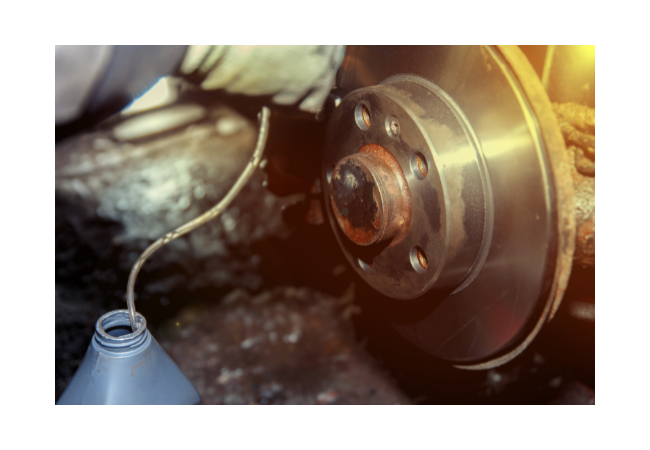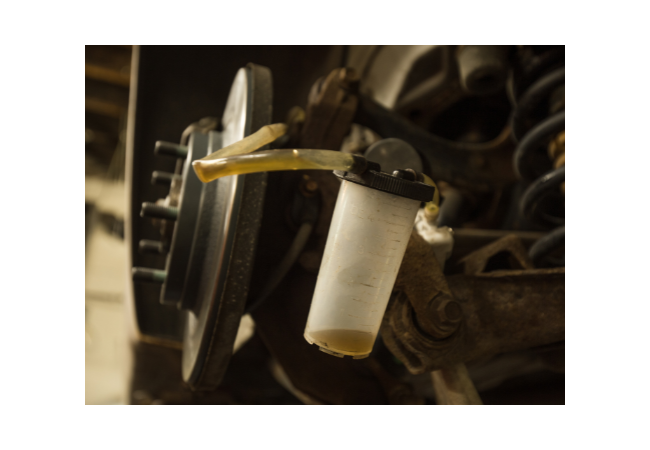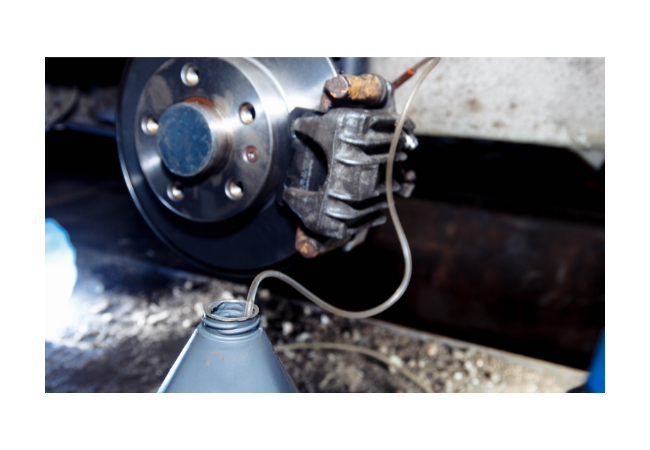The excitement of hitting the open road, the wind in your hair, and the freedom of the journey, all hinge on one crucial aspect: safety. Ensuring that your vehicle is in tip-top shape is not just a matter of routine maintenance, but a critical aspect of personal safety and that of others on the road. A key player in this safety equation is the humble brake system. Now imagine a method that allows you to maintain your brakes single-handedly, using nothing but the force of gravity. Yes, you read that correctly. Welcome to the world of how to gravity bleed brakes.
How to gravity bleed brakes is a method of brake maintenance that utilizes the natural force of gravity to bleed your brakes. It is an effective, efficient, and simple method that can be done by anyone, regardless of their technical prowess. The how-to gravity bleed brakes process is not only a cost-effective way to maintain your brakes, but it also ensures that your vehicle’s braking system is working at its optimum, providing you with the peace of mind you deserve when out on the road.
Contents
- 1 Understanding Gravity Bleeding
- 2 Importance of Brake Maintenance
- 3 Tools and Supplies Needed for Gravity Bleeding
- 4 Step-by-Step Guide to Gravity Bleeding Brakes
- 5 Tips for Successful Gravity Bleeding
- 6 Identifying Common Brake System Issues
- 7 The Benefits of Gravity Bleeding
- 8 Summary of How to Gravity Bleed Brakes
- 9 Frequently Asked Questions
Short Summary
- Gravity bleeding is a simple process of removing air from brake lines and replacing it with fresh brake fluid.
- Regular maintenance, including gravity bleeding, is necessary to ensure optimal performance and safety of the vehicle.
- Gravity Bleeding offers an efficient cost-effective method that can be done independently without special tools or equipment.
Understanding Gravity Bleeding

So what exactly is gravity bleeding? Gravity bleeding is a method of bleeding brakes that uses the force of gravity to facilitate the removal of air from the brake lines through the bleed screw. The goal of gravity bleeding is to remove air from the brake system, replacing it with fresh brake fluid. This differs from other methods such as pressure and vacuum bleeding. While pressure bleeding is considered the most effective method, it requires specialized tools such as a pressure bleeder or an air compressor. Similarly, vacuum bleeding uses a vacuum pump to remove air bubbles from the brake lines, but it also requires specialized equipment.
Gravity bleeding, on the other hand, is a much simpler process. It only requires a clean jar or bottle with a lid, a length of hose that fits the brake bleeder bolt, and brake fluid. You begin by connecting the hose to the bleeder screws. Then, you open the bleeder screws slightly and depress the brake pedal. This process is repeated until the brake fluid, free of air bubbles, begins to flow out. It’s a straightforward process that can be done independently, without the need for a helping hand.
The process of gravity bleeding, while simple, requires careful attention. During the process, it’s crucial to monitor the fluid flow to ensure that the brake fluid reservoir does not run out and to observe the circulation of old brake fluid and air. If you encounter difficulty or feel that the brake pedal remains spongy after bleeding, it’s advisable to consult a professional mechanic.
Importance of Brake Maintenance
Now you might be wondering, why is brake system maintenance, or more specifically, brake bleeding, so important. Regular brake maintenance is crucial for the optimal performance and safety of your vehicle. Contaminated brake fluid can significantly reduce brake performance and even lead to brake failure, increasing the risk of a catastrophic car accident. This is why it’s recommended to bleed the brakes every 2 to 3 years, or whenever the brake pads, hoses, or calipers are inspected or altered by a professional.
When the brake fluid becomes contaminated, its performance decreases. This contamination can occur due to the absorption of moisture from the air, which lowers the boiling point of the brake fluid and causes it to become less effective. This reduction in performance can lead to brake failure, a situation no driver wants to find themselves in. Therefore, regular brake bleeding, such as gravity bleeding, is necessary to ensure the brake fluid in the system is clean and functioning at its best.
Signs that your brakes need attention can include unusual noises or vibrations when applying the brakes. If you notice these signs, it’s advisable to have your brakes inspected by a mechanic. Regular brake maintenance, including brake bleeding, can help prevent these issues and ensure your vehicle continues to operate safely with no decrease in braking power because of air pockets in your master cylinder reservoir.
Tools and Supplies Needed for Gravity Bleeding
Before we dive into the step-by-step guide to gravity bleeding your brakes, let’s talk about the tools and supplies you’ll need. Having the right tools at hand is crucial for a successful gravity bleeding process. The great news is, you won’t need any fancy gadgets or high-tech devices for this job. The items required for the gravity bleeding process are quite basic and easily accessible. You’ll need a clean jar or bottle with a lid, a length of hose that fits the brake bleeder bolt, and of course, brake fluid. Speed bleeders can also be used as an alternative to the traditional bleeder screw, but they are not a requirement.
It’s also important to ensure that your workspace is clean and dry before you begin the process. This not only helps in keeping the brake fluid uncontaminated but also ensures your safety and makes the process more efficient.
Step-by-Step Guide to Gravity Bleeding Brakes

Now that we’ve covered the basics of gravity bleeding and the tools you’ll need, let’s get down to the nitty-gritty of the gravity bleeding process. We’ll walk you through each step, ensuring that you have a clear understanding of what needs to be done.
First, you’ll need to locate the bleeder valve on the brake caliper.
Preparing Your Workspace
First things first, you need to prepare your workspace. This step might seem obvious, but it’s crucial for a successful gravity bleed. Working in a clean, dry environment helps prevent any foreign bodies from entering the brake system and causing damage.
Once you’ve chosen your workspace, it’s time to gather your tools. Assemble the necessary supplies in a convenient location. This makes the process smoother as you won’t have to stop and search for tools in the middle of the process.
After each step of the gravity bleeding process, it’s important to seal the separation points immediately. This prevents more air from entering the brake system and causing issues down the line.
Raising and Securing Your Vehicle
Next up, you’ll need to raise and secure your vehicle. This is a crucial step, as working on a vehicle that isn’t stable can lead to injuries and damage to the car. The first step in gravity bleeding brakes independently is elevating your vehicle above the ground.
Once the vehicle is raised, you need to ensure it’s secure. You can do this by gently shaking the vehicle. If it feels stable, you’re good to go. If it doesn’t, do not proceed until you’ve secured it properly. Remember, safety is paramount when working on your vehicle.
Locating and Opening the Brake Fluid Reservoir
With the vehicle raised and secured, it’s time to locate the master cylinder and open the brake fluid reservoir. The brake bleeder valve is usually located on the top of the brake caliper for disc brakes and typically at the top middle on the rear of the brakes/wheel tire area for drum brakes, near the wheel cylinder. Now, you can draw brake fluid from the reservoir.
Once you’ve located the brake fluid reservoir, the next step is to remove its top. When doing this, be careful not to spill any brake fluid, as it can damage the tires. Always ensure that the brake fluid is contained in a suitable receptacle.
Lastly, identify the bleed screw. Typically, these are located on the brake calipers or close to the wheels. These screws are what you’ll be opening and closing during the gravity bleeding process.
Tips for Successful Gravity Bleeding
Now that you know the steps to gravity bleeding your brakes, we’ll share some tips to ensure a successful process. First off, before you start any brake bleeding procedure, it’s a good idea to soak the bleed screws in penetrating oil. This makes them easier to open and reduces the chance of them getting stuck.
Next, ensure that your workspace and vehicle are properly prepared. This not only includes cleaning your workspace, but also ensuring your vehicle is stable and secure before you start the process.
Lastly, keep an eye out for any leaks or issues during the process. If you notice any problems or if you spill old brake fluid, it’s important to address these issues immediately. If brake fluid is spilled, flush the area with cool, clean water to prevent damage.
Identifying Common Brake System Issues
Despite your best efforts, issues might still arise during the gravity bleeding process. But don’t worry, we’ve got you covered. Some of the common brake system issues include:
- Worn brake linings
- Misadjusted drum brakes
- Air in the brake lines
- Soft brake pedal
- Car pulling to one side
If you encounter any of these issues, it’s recommended to consult a professional.
Leaks are another common issue. If you notice a leak in your brake system, it’s crucial to locate and seal it before proceeding. Any leaks can introduce air into the system, which will affect the effectiveness of the gravity bleeding process.
Finally, if you notice that your brake pedal remains spongy or soft after bleeding, it’s a sign that there might still be air in the brake lines. In such cases, it’s advisable to perform the gravity bleeding process again or consult a professional.
The Benefits of Gravity Bleeding

By now, you’re well-versed in the process of gravity bleeding your brakes. But why is this method preferred over others? The benefits of gravity bleeding are numerous. For starters, it’s a simple, efficient, and cost-effective method that doesn’t require any specialized tools or equipment. Plus, it’s something you can do on your own, saving you the cost and time of visiting a mechanic.
Gravity bleeding is also a great way to keep your brake system in check. By regularly performing gravity bleed brakes, you’re ensuring that your braking system is functioning at its best, providing you with optimal braking performance. It’s essential to bleed brakes as part of this maintenance process.
Finally, gravity bleeding is most suitable when the need arises to expel air from the brake lines. So whether you’re a car enthusiast, a DIY fan, or just a regular car owner looking to maintain your vehicle, gravity bleeding is a method worth considering.
Summary of How to Gravity Bleed Brakes
In conclusion, brake maintenance, specifically gravity bleeding, is a crucial aspect of vehicle safety. It’s a simple, cost-effective method that relies on the natural force of gravity to remove air from your brake lines and ensure optimal braking performance. With just a few basic tools, a clean workspace, and a bit of time, you can perform gravity bleeding at home, without the need for a mechanic.
So the next time you hit the open road, remember the role of gravity in maintaining your vehicle’s safety. It’s not just a force keeping us grounded, but a tool that can help ensure our journeys are safe and smooth. Because when it comes to vehicle maintenance, every little bit counts.
Frequently Asked Questions
How long does it take for brakes to bleed from gravity?
It should take about an hour to let gravity do its job and completely bleed each brake. Open the bleed screw and wait until clean fluid is flowing into the bottle.
Will a master cylinder gravity bleed?
A master cylinder can be gravity bled by filling it and then opening the bleeder screws at each wheel to allow the fluid to pass through the lines and expel any air bubbles.
Special tools are needed to collect the fluid as it drips out of the bleeder screws.
How do you get air out of brake lines without bleeding?
Pressing the brakes while pouring brake fluid into the reservoir can help remove any air bubbles and force them out of the system without needing to bleed the lines.
Care should be taken not to exceed the maximum level of fluid in the reservoir.
How to bleed brakes?
To bleed brakes, connect a tool to catch the fluid to the bleeder screw, then prime the pressure bleeder or have a friend press the brake pedal down. Crack the bleeder screw and allow the fluid to flow out, then repeat for each wheel.
Finally, close the brake bleeder valve and check the brake fluid level.
What is gravity bleeding?
Gravity bleeding is a brake bleeding technique where the force of gravity is used to remove air from the brake lines, allowing new brake fluid to enter. This technique is often used when replacing brake fluid, as it is a relatively simple and cost-effective way to ensure that the brakes are working properly. It is also a good way to check for any air bubbles that may have been trapped in the air.
